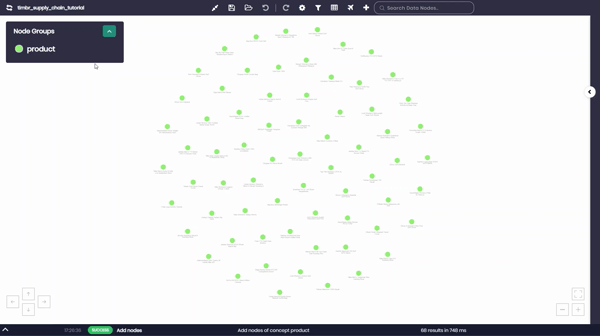ontologies for AI & ML
GraphRAG
While most RAG systems focus on unstructured text, the real value for enterprises often lies in the integration with structured, governed data.
Timbr’s GraphRAG closes that gap by enabling LLMs to retrieve context-rich answers from SQL ontologies, leveraging uniform concepts, semantic relationships, hierarchies, and metrics.
Timbr GraphRAG SDK
The Timbr GraphRAG SDK empowers developers to perform Retrieval-Augmented Generation over structured enterprise data. It enables LLMs to query SQL ontologies as knowledge graphs. automatically discovering relevant concepts, applying filters, and generating high-quality, governed responses rooted in semantic context.
How Timbr GraphRAG Helps Meet Challenges in RAG
| Challenge | How Timbr Helps |
|---|---|
| RAG typically ignores structured sources | GraphRAG enables semantic retrieval over SQL ontologies |
| Structured data requires complex JOINs | GraphRAG uses relationships defined in the ontology, no JOINs needed |
| Answers lack context or consistency | GraphRAG retrieves with semantic filters, classifications, and governed metrics |
| Hallucinations from LLM-generated SQL | GraphRAG guides the LLM using explicit concept relationships and rules |
Ontologies + RAG:
A Powerful Combination
By treating your semantic model as a graph-structured knowledge base, GraphRAG enables:
- Precision Retrieval: Precision retrieval from structured data using concept-aware filters.
- Transitive Reasoning: Transitive reasoning over hierarchies and relationships.
- Metric Reuse: Metric reuse to enforce consistent logic across generated responses.
- Hybrid RAG: Hybrid RAG that combines unstructured and structured retrieval.
- LLM Explainability: LLM explainability through traceable, auditable SQL queries.
Unlike traditional vector-based RAG, GraphRAG doesn’t just retrieve documents, it retrieves answers you can trust.
Why RAG Needs Timbr
| Without GraphRAG | With Timbr GraphRAG |
|---|---|
| LLMs hallucinate SQL over raw schemas | Queries are grounded in semantic context and relationships |
| Structured sources are underutilized | Ontologies expose governed, queryable data for RAG |
| No transparency or governance | All retrievals respect access policies and business logic |
| Limited reasoning across entities | Transitive, graph-based exploration enables deeper understanding |
Use Cases
LLM chatbots with real-time structured answers
Retrieve governed facts and metrics from SQL ontologies during generation.
Enterprise copilots with hybrid RAG
Combine vector search over documents with structured lookups from Timbr.
Personalized responses with classification filters
Use hierarchy-aware filtering (e.g. product → category → region) in generated responses.
Explainable LLM pipelines
Generate answers from LLMs with clear, auditable links to source data and logic.
